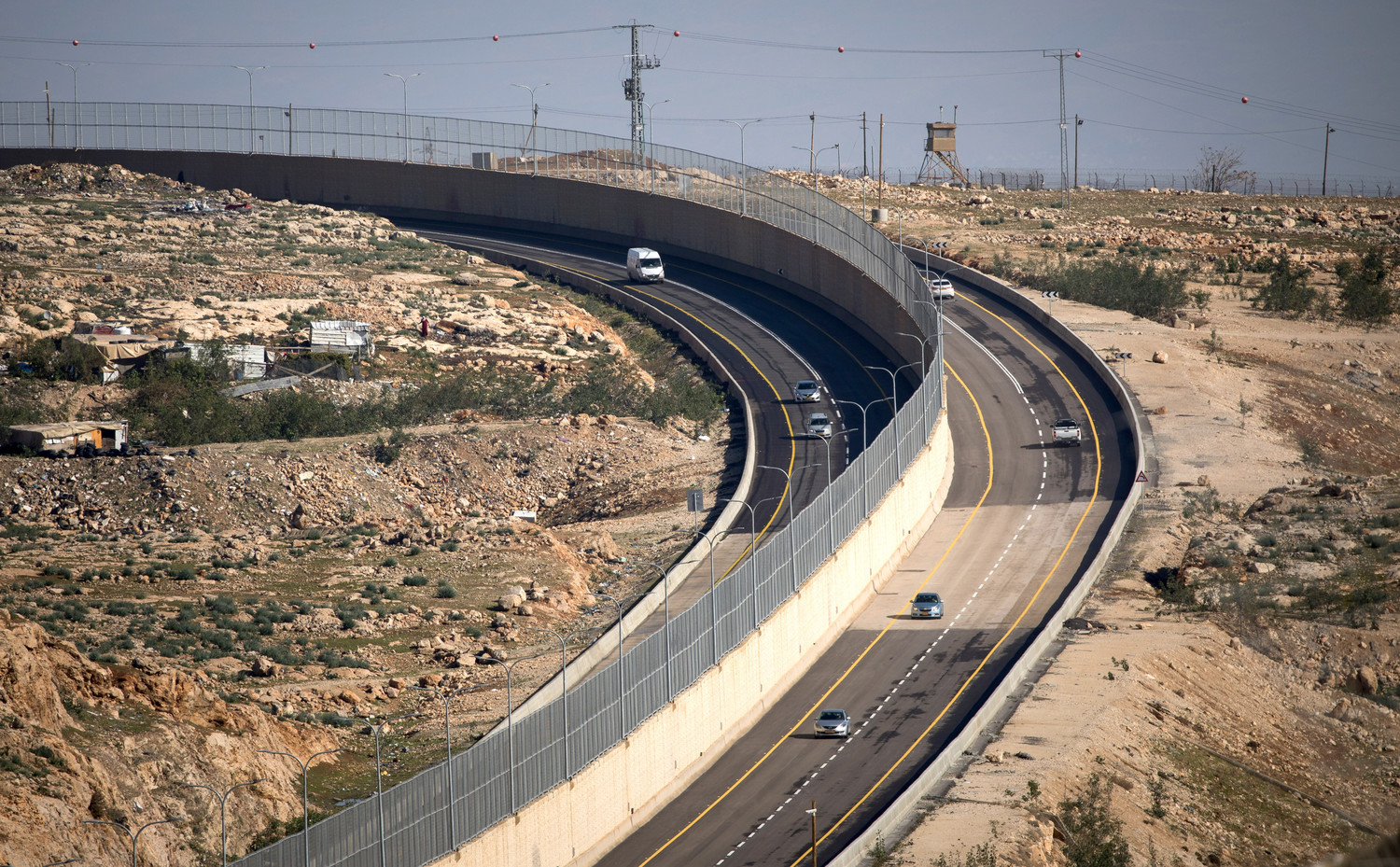Israeli and Palestinian drivers cheer Route 4370
Israel has found itself under attack by international media and the Palestinian Authority, who have accused the Jewish state of carrying out a policy of apartheid against its Arab population.
The allegations followed the opening of a new 5-kilometee stretch of highway east of Jerusalem, with separate lanes for Israeli citizen and non-citizen traffic divided by a concrete wall.
Motorists and Israeli officials, however, are praising the new Route 4370, which bypasses an overtaxed entrance to Jerusalem, as a game-changer that alleviates recurrent traffic jams in the area.
Jewish and Arab leaders participated in a ribbon-cutting ceremony earlier this month launching traffic on the new road.
Rachel Greenspan, senior advisor for foreign affairs and media to Jerusalem Mayor Moshe Lion, told JNS that the road would ease congestion and movement for the city’s Arab residents, especially those in the Shuafat Camp and in Issawiyya, and that it would “allow Arab and Jewish residents alike to move throughout the city more efficiently, improving day-to-day life for all.”
One of those in attendance at the ribbon-cutting ceremony was Akram Abdel-Rachman, a retired business leader in the Jerusalem Arab community and resident of the city’s southern Sharafat neighborhood. He told JNS that he supports “any project that eases the life of residents in the area. It’s a blessing.”
“So many families have multiple cars, and there is so much traffic in the area,” he said. “What difference does religion make?”
He added, “We are not politicians; we just want quiet here, and the ability to make a living. We don’t look at the politics; we just want services like all residents here.”
In addition to Lion, Minister of Transportation Yisrael Katz, Minister of Internal Security Gilad Erdan were joined by Abdel-Rachman and the mukhtar, or Muslim spiritual leader, of neighboring Anata, who wanted to show his appreciation of the project.
Despite support from local Arab leaders, images of parallel roads separated by a barrier have drawn the ire of international media. Some view the move as a land grab by Israel in Judea and Samaria.
In Haaretz, Shaul Arieli, considered one of Israel’s experts on the future Israeli-Palestinian border, said that while the new road may ease travel time for Palestinians, he believes Israel had an ulterior motive in building it — “to pave the way for the construction of the Mevasseret Adumim neighborhood, also known as E1, which was planned to create a continuum of Jewish construction between Ma’aleh Adumim and the capital [Jerusalem].”
The opening of Route 4370 represents the completion of the initial stage of a major transportation project in the northern Jerusalem area — to benefit both Jews and Arabs — that so far has cost around NIS 30 million (about $8.1 million).
Elnatan Scharia, spokesman for the Yesha Council of Jewish communities in Judea and Samaria, explained that “Arabs under the PA can’t enter Jerusalem [without a permit], so instead of having to get stuck in checkpoint traffic outside the city, the new bypass road allows them to get to places like Jericho more easily.”
He emphasized that despite allegations of “Jewish-only” roads, Jewish and Arab motorists share all of the main arteries throughout Judea and Samaria, commonly known as the West Bank.
While Arabs can travel freely throughout Judea and Samaria, Jews are limited in which roads they can travel. Under Israeli law, it is illegal for Jews to enter any “Area A” territories, or those under full Palestinian Authority administration.
The division of land in Judea and Samaria into pockets of Israeli and Palestinian control, known as Areas A, B and C, followed the signing of the Oslo Accords in the 1990s.
Prior to Oslo, Israelis were able to travel freely throughout Judea and Samaria, including major Arab cities, such as Ramallah. At the same time, Palestinians were able to travel freely through Israel, with restrictions introduced in 1989 after the start of the First Intifada. Security measures were expanded after a wave of deadly terror in 1993, shortly after Oslo was signed.
In the wake of the violence, Israel built an extensive series of roads that bypass Palestinian cities. While the roads provide safe travel for Jewish commuters, they are also used by Palestinian drivers to avoid downtown traffic jams. All major traffic routes, including Highway 60, the main highway from northern Samaria to southern Judea, are open to both Israeli and Palestinian motorists.
Project partners, including the Ministry of Transportation, the Jerusalem Municipality and the Binyamin Regional Council, say there are logical reasons to separate Israeli and Palestinian traffic.
Katz said the road “constitutes an important step in connecting the residents of the Binyamin region to Jerusalem and in strengthening the metropolitan area of Greater Jerusalem.”
The western spur, which is open to cars with Palestinian Authority license plates, serves as a bypass for Arabs to travel from north of Jerusalem towards Palestinian towns east and south of the city without having to stop at checkpoints. The eastern spur connects Israeli communities north of Jerusalem to the city itself via the checkpoint at the Naomi Shemer Tunnel or the French Hill Junction, both on the eastern side of the city.
The road, therefore, offers drivers another way to enter the city, bypassing the busy Hizma checkpoint, which connects Pisgat Ze’ev with the rest of Jerusalem.
For years, the checkpoint has been a daily bottleneck for Jews and Arabs seeking to enter the city.
Yisrael Gantz, head of the Binyamin Regional Council, described the new road as “nothing short of an oxygen pipe for the residents of Binyamin and the entire region.”

 54.0°,
A Few Clouds
54.0°,
A Few Clouds 







